 Image search results - "pet" Image search results - "pet" |
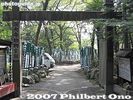
Entrance to Jindaiji pet cemetary
|
|
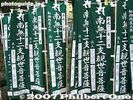
Banners in memory of deceased pets
|
|

Kannon tower
|
|
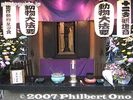
Junishi Kannon altar
|
|
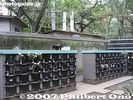
Pet urns. Notice the crematorium smoke stacks in the background.
|
|
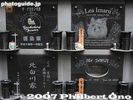
Pet urns
|
|

Pet urns in columbarium
|
|
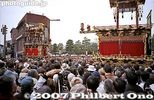
Only four of the 12 floats have karakuri puppets which perform. Takayama Matsuri, Gifu
|
|

The karakuri puppets first appeared on the Takayama Matsuri floats in the 18th century. They were handcrafted by artisans in Kyoto.
|
|

Japan has three basic types of karakuri puppets based on the region: Kyoto, Nagoya, and Kanto (Tokyo area). The Takayama karakuri are the Nagoya-type.
|
|

Pet memorial, Eko-in
|
|

The puppets come out on a plank sticking out of the float and perform in a mini play with various stunts.
|
|

Pet memorial, Eko-in temple.
|
|

Ryuujintai Karakuri 龍神台からくり
|
|

Sanbasou Karakuri 三番叟からくり
|
|

Sanbasou Karakuri 三番叟からくり
|
|
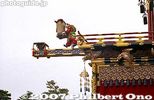
Ryuujintai Karakuri 龍神台からくり
|
|
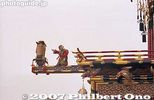
Ryuujintai Karakuri 龍神台からくり
|
|
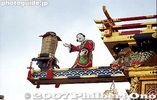
Ryuujintai Karakuri, Takayama Festival, Gifu 龍神台からくり
|
|

The karakuri perfom one float at a time.
|
|
|
|

Ryuujintai Karakuri 龍神台からくり
|
|
|

Floats are displayed on the street. Takayama Matsuri, Gifu
|
|

From 1997 to 2019, Imazu held the annual Biwako Shuko no Uta (Lake Biwa Rowing Song) choir contest in June at Imazu Shimin Kaikan concert hall. (Discontinued after 2019.)「琵琶湖周航の歌」音楽祭合唱コンクール
|
|

Poster for song competition. 第11回「琵琶湖周航の歌」音楽祭 合唱コンクールHeld annually in June since 1997, this song contest has over 20 choirs, mainly from western Japan, compete by singing two songs each. One song they must sing is Biwako Shuko no Uta, while the other song can be anything. On June 17, 2007, the English version, called "Lake Biwa Rowing Song," was sung for the first time at this contest. 第11回「琵琶湖周航の歌」音楽祭 合唱コンクールでジェイミーとメゲン・トンプソン姉妹がコンクールで英語版を歌った。
|
|

Hall lobby and reception desk where you pay 500 yen admission.
|
|

Imazu-cho Tourist Association booth in the lobby where they sold song-related souvenirs, including our Lake Biwa Rowing Song CD.
|
|

Lake Biwa Rowing Song CD flyer. The CD is 800 yen.
|
|

Program. 残念ながら、私どもがこのプログラムに掲載されていませんでした。
|
|

In 2007, 25 choirs, mainly from Shiga and neighboring prefectures, competed. They sang the same song in various ways.
|
|

To enter the choir competition, the choir must have at least 12 members. The entry deadline is late Feb. Entry fee is 5,000 yen per choir (3,000 yen for high school and younger choirs).
|
|

Each choir has to sing two songs: One is Biwako Shuko no Uta, and the second one could be any song. Each choir must sing both songs within 8 min.
|
|

The choirs sing the same song in various ways. Most of them also had a piano player. The choir competition lasted from 10 am to 4 pm.
|
|

Jamie Thompson コンクールで初めて英語で歌われた。歌が終わると大きな拍手。
|
|

Megan Thompson 昼休み中だったし、プログラムにも載っていなかったので大勢の客が退場した後に英語版が歌われた。
|
|

Backstage
|
|

Awards ceremony (受賞式). Sadly, this choir contest has been discontinued after the last time it was held in 2019. Held annually in mid-June from 1997 to 2019. In recent years, there have been fewer choir entrants and fewer from within Shiga.
|
|

Trophies. The 1st place winner would receive 100,000 yen, 2nd place 50,000 yen, and 3rd place 30,000 yen.
|
|

1st place winner 「合唱団かやの樹」(三重県伊賀市)が金賞
|
|

During the choir contest, Imazu Jr. High rowing club offered rides on a wooden, fixed-seat boat. It is a replica of the boat used 90 years ago by Oguchi Taro and crew.
|
|
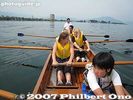
We rowed for about 20 min. Great fun, but they don't offer this boat ride anymore during the choir contest. Probably due to the lack of demand. 今津中学校ボート部がフィックス艇の体験乗船もやって面白かった。
|
|
|
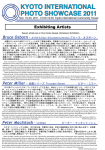
Bilingual biographies of Bruce Osborn, Peter Miller, and Peter MacIntosh.
|
|

Next was Peter Miller's copperplate photogravures of furusato (hometown) scenes in Japan.
|
|

Peter Miller started his series with pictures of Shirakawa-go (Gifu Prefecture) in winter snow. The houses have steep, thatched roofs to dispel snow.
|
|

Shirakawa-go (Gifu Prefecture) in winter snow by Peter Miller.
|
|
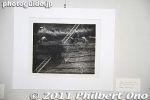
Rethatching a roof in Shirakawa-go, a World Heritage Site.
|
|
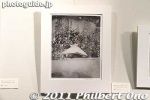
Snow in Muikamachi, Niigata.
|
|
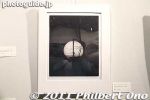
Meigetsuin temple in Kamakura with its famous moon-shaped window which opens to a Japanese garden. Also famous for hydrangeas in June.
|
|

Bottom is a shot of Pittsburgh, PA taken when Peter was a young boy.
|
|
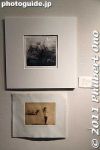
Peter Miller is one of the few artists who uses the traditional technique of copperplate photogravure. A copperplate is etched through a chemical process and then inked and pressed with paper to make prints.
|
|

Kamakura temples. Peter lives in Kamakura.
|
|
|

Peter Miller explaining his work to visitors.
|
|

Canadian Peter MacIntosh is the Geisha Guru. He created a 13-meter-long montage of his Kyoto geiko/maiko photos. Ten years worth of 250+ photos.
|
|
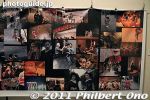
Peter MacIntosh's Kyoto geiko/maiko photos. A few photos were taken overseas when he took a few geiko for overseas events.
|
|
|
|
|
|
|
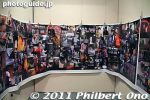
Standing here felt like you were surrounded by geisha.
|
|

Peter MacIntosh explains his work to visitors. See Peter's Web site at petermacintosh.com.
|
|

Sports Recreation Shiga 2008 was held in Shiga during Oct. 18-21, 2008. Various sports tournaments were held all around Shiga. The aerobics competition was held in Maibara. Maibara Station had this sign.
|
|

Banners guide the way to the Shiga Prefectural Cultural and Industrial Exchange Hall (Shiga Kenritsu Bunka Sangyo Koryu Kaikan) 滋賀県立文化産業交流会館
|
|

Shiga Prefectural Cultural and Industrial Exchange Hall (Shiga Kenritsu Bunka Sangyo Koryu Kaikan) 滋賀県立文化産業交流会館
|
|

A Caffy doll in front of the hall. Aerobics participants from all over Japan gathered in the hall. The Sports Recreation event is held annually in a different prefecture. It is open to adults of all ages.
|
|

Inside the hall with the aerobics competition which started at 9:30 am on Oct. 20, 2008. The hall was filled with energy and cheering. Thirty-nine teams of 3 to 5 people competed, totalling about 190 competitors. Three South Korean teams also competed.
|
|
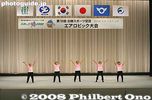
The highlight and newsmaker was this group called the Tokimeki Silvers consisting of women in their 80s and 90s. They were from Shiga.
|
|

Tokimeki Silvers ときめきシルバーズ
|
|

Tokimeki Silvers
|
|
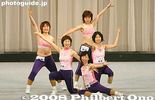
Each team had to have 3 to 5 people performing 90 sec. to 120 sec. long. The routine was required to include jumping jacks, kicks, and push ups.
|
|

The contestants had to be at least 20 years old, but I think most people looked middle-aged.
|
|
|
|
|
|
|
|
|

Audience in the seats.
|
|
|
|
|

Local children watch aerobics behind a "Welcome to Maibara" sign.
|
|

Aerobics team from Hiroshima.
|
|
|
|
|
|
|
|
|
|
|
|
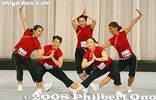
Aerobics team from Shiga.
|
|
|
|
|
|
|
|
|
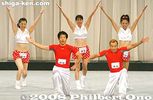
Aerobics team from Tokushima.
|
|
|
|
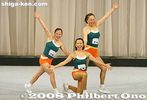
Aerobics team from Miyagi.
|
|

After the aerobics performances, there was a one-hour lunch break at noon, and a group picture-taking session of all the aerobics teams and officials.
|
|

Group shot
|
|

Maibara's official mascot, a family of fireflies.
|
|

Posters for aerobics teams made by local school children.
|
|

Posters for aerobics teams made by local school children.
|
|

Poster for the Tokimeki Silvers
|
|

The hall lobby had posters showing Maibara's major sights.
|
|

The hall lobby also had articles and snapshots of the aerobics event the day before.
|
|

Outside the hall were a few food booths and Spo-rec mascot Caffy walking around.
|
|
|

After lunch, everyone participated in a joint aerobics session at 1 pm with a well-known instructor.
|
|

This one-hour joint aerobics session was called the "Memorial Program."
|
|
|
|

At 2 pm, all the teams sat in the front to listen to the announcement of the winners.
|
|

As each winner was announced, the respective team cheered and went backstage. The senior group was of course a winner.
|
|
|
|

The MC was an NHK Otsu TV newscaster.
|
|
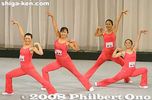
The winning teams performed their routines again.
|
|
|

Aerobics team from Hiroshima.
|
|
|
|
|

Awards ceremony with the winning teams on stage.
|
|
|
|
|
|
|
|
|
|
|
|
|
|
|

ときめきシルバーズ
|
|

The three South Korean aerobics teams were awarded with the International Exchange Award.
|
|

During the closing ceremony, Maibara Mayor Michio Hirao offer congratulations.
|
|

People from Miyazaki Prefecture which will host the next Sports Recreation meet in 2009, do some PR.
|
|

People from Miyazaki Prefecture which will host the next Sports Recreation meet in 2009, do some PR.
|
|

Banners line the way back to Maibara Station.
|
|

JR Maibara Station with a Spo-rec welcome banner.
|
|

National Bunraku Puppet Theater. Bunraku is over 370 years old, even older than kabuki.
|
|

Inside National Bunraku Puppet Theater. Photography is not allowed during the plays. Bunraku puppets can perform feats which human actors cannot. This can make it interesting. Bring binoculars though.
|
|

National Bunraku Puppet Theater Museum
|
|

National Bunraku Puppet Theater at night.
|
|
|
|